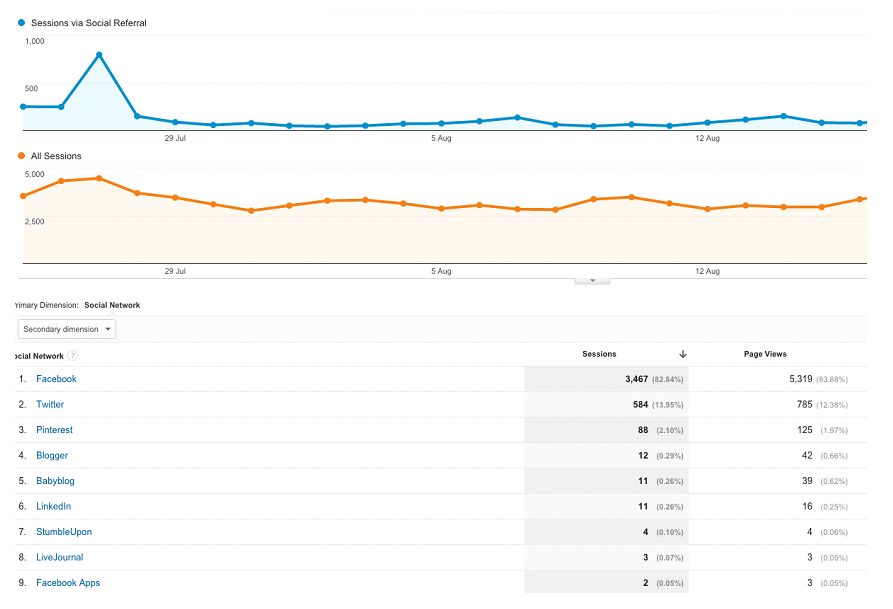In a world of digital marketing, social media should be an essential part of any modern business’ online strategy. Social media includes a range of different networks, including Facebook, Twitter, Instagram, and LinkedIn – all of which provide a unique platform for online communication between a business and their consumers.
Social media can help you to build your brand, engage with your audience, grow your customer base, and generate leads and sales – the overall goal for any business. Social media is always changing, so it is vital that brands keep their social media strategy fresh, and adapt when necessary.
Here are a few different ways to reinvent your tired and tested social media strategy, giving it a whole new lease of life:
Consumer insights
Understanding how your audience grows, interacts with your brand, and ultimately becomes a new customer is a key part of any smart and sophisticated social media strategy. There is no point using social media unless you have an audience and know exactly what demographic you need to be targeting. Who are you writing content for and trying to engage with? There are multiple different ways to get an insight into your social audience and to gather feedback and data from your existing customer base.
Using Twitter Analytics, Facebook Insights, and tools like Social Bro you can get quite a detailed demographic breakdown of your audience. A good way to gain real customer insights is to just ask your audience to fill in a survey asking how they think your social media could be improved – you may need to give them a small incentive to fill it out, but the results will be worth it. This data allows you to create social personas, which can help you to develop targeted content ideas, define engagement tactics and drive overall marketing decisions.
Fresh content
It can be very easy to fall into a routine of only posting promotional posts and tweets, but this is likely to put your audience off. The content posted out of your social media accounts needs to be fresh and engaging, and something your audience actually wants to see. No one likes constant self-promotion, and social media should have a good balance of posts and tweets, in order to boost engagement levels.
It’s important to think about the different types of content you are producing for social media. Tweets and posts don’t just need to be written text, and channels like Instagram and Pinterest were made for visual content. Tweets with an image get 150% more retweets and 98% more favourites, and they have a much more immediate effect on social media users. Visual content, including videos, is engaging and sharable, and will leave your audience coming back for more. Set up an editorial calendar for each of your social media accounts, so you know which content needs to be shared and when.
Online engagement
One of the main benefits of social media is the ability to develop rich relationships with your audience. But, as mentioned before, no one wants to be approached about your products and services without any other form of engagement. Social media provides you with the perfect platform to really communicate with your customers and show them how important they are to you.
Follow them back and speak to them about topics of interest or offer your expertise where possible. Try and start conversations at various times of the day and talk about a range of different things – you will soon work out what interests them and when the best time to engage with them is. Try and include hashtags on all your messages too, as this will give you better visibility and help you to reach new audiences.
Measurement
Measuring the success of your social media strategy is crucial – if you don’t know how well it is working then you will never be able to adjust it for continuous improvement. Use analytics to find out which social networks are sending the most traffic to your website and decide if you are focussing on the right channels – you may find that while you’re putting emphasis on your Pinterest account, Instagram is actually sending you more traffic. Use UTM codes to track exactly which links on social media your traffic is coming from.
It’s a good idea to regularly audit all your social media channels to ensure all your branding is up to date, your contact information is correct, and your audience on each network is growing. Come back to your original business objective each time and work out how close to meeting your goals you are. Use Facebook metrics and Twitter analytics to see which content is having the best impact on your audience, and what isn’t working as well, and use social listening to monitor any mentions of your brand and your product.
Work out what changes you need to make to your strategy moving forward, and compare your results over time to track growth and success. As new social networks emerge and grow, you will need to be able to adapt your strategy and work around any new challenges. A social media strategy should be flexible and always open to change, so use your insights and data to regularly monitor and evaluate your success.



